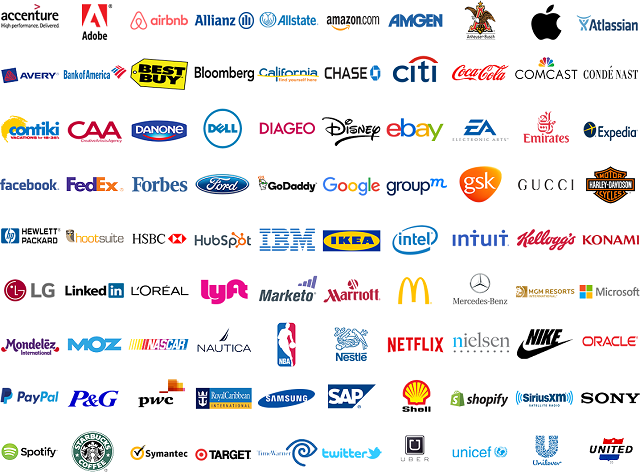Unlock the Power of Link Building for Your Business
In today’s digital world, effective SEO strategies are key for businesses to lead. Link building is a big part of a good SEO plan. It helps bring more organic traffic to your site.
Getting links from trusted sources can really help your business online. As a digital marketing expert, knowing how to use link building is vital. It helps create a strong SEO plan that gets real results.
Key Takeaways
- Link building is a critical component of SEO strategies.
- High-quality links drive organic traffic and boost online visibility.
- Effective link building requires a strategic approach.
- Understanding link building is essential for digital marketing professionals.
- A well-executed link building strategy can significantly enhance business credibility.
What is Link Building and Why is it Important?
Link building is a key part of SEO. It’s about getting links from other sites to boost your site’s authority and ranking. It’s vital for digital marketing, helping your site be seen and trusted more.
Definition of Link Building
Link building means getting hyperlinks from other sites to yours. It’s about building a network of links that point to your site. This shows search engines your content is valuable and worth mentioning. Quality links come from trusted, relevant sites, boosting your site’s credibility.
Benefits of Link Building
Link building offers many benefits. It helps your website ranking by showing search engines you’re a trusted source. It also boosts your online presence, bringing more visitors to your site. Plus, it can lead to more backlinks, creating a cycle of credibility and visibility.
- Increased website authority
- Enhanced online visibility
- Improved search engine rankings
- More referral traffic
How Link Building Affects SEO
Link building directly affects SEO. The quality and number of backlinks to your site are key factors for search engines. A strong link building strategy can greatly improve your SEO, leading to better rankings and more visitors. It’s crucial to get quality links from trusted sources to get the most SEO benefits.
In summary, link building is more than just getting links. It’s about building a real online presence that search engines and users respect. By using effective link building strategies, businesses can boost their online presence and meet their digital marketing goals.
The Different Types of Links
Knowing about the different types of links is key for a good link building plan. Links help search engines rank websites. Using them well can really boost your online presence.
Internal Links
Internal links connect pages on the same website. They help users and search engines see your site’s layout and content order. Good internal linking makes your site easier to navigate and search.
By linking to other pages on your site, you share link value. This helps visitors find more content and can lead to more engagement and sales.
External Links
External links go to other websites. They can be incoming (backlinks) or outgoing (links from your site to another). Outgoing links show you’re credible by linking to trusted sources.
Using external links wisely can make your content more valuable. But, only link to high-quality, relevant sites to keep your content strong.
Backlinks
Backlinks are links from other sites to yours. They’re important for SEO and link building. They tell search engines your content is worth sharing. The quality and number of backlinks affect your site’s authority and ranking.
Anchor text is the text in a hyperlink. It tells search engines what the linked page is about. Using good anchor text can make your pages more visible in search results.
In summary, using internal, external, and backlinks well can greatly improve your link building and SEO efforts.
Strategies for Effective Link Building
Building a strong link building campaign needs several key elements. It’s not just about getting links. It’s about getting quality links from trusted sources. These links boost your website’s credibility and search rankings.
Creating Quality Content
The base of a good link building plan is creating quality content. This content should be valuable, relevant, and shareable. It could be detailed guides, informative blog posts, or engaging infographics. Good content naturally draws links from other sites.
- Make content that meets your audience’s needs and interests.
- Use catchy headlines and meta descriptions to get more clicks.
- Use internal links to make your site easier to navigate.
Guest Blogging
Guest blogging is a key tactic for building links. It means writing for other respected sites in your field. This way, you get quality backlinks and reach more people.
- Find respected sites in your niche that welcome guest posts.
- Write engaging, valuable content for the host site.
- Put a link back to your site in your author bio or in the content.
Influencer Outreach
Influencer outreach is another smart way to build quality links. Working with influencers in your field can expose you to their followers. You might get links from trusted sources.
- Look for influencers who really care about your niche.
- Suggest collaborations that benefit both of you, like content partnerships or product reviews.
- Keep in touch with influencers to build strong relationships and encourage more collaborations.
Using these strategies in your link building efforts can boost your website’s online presence. It can drive more traffic and improve your search engine rankings through effective SEO strategies.
The Role of Content Marketing in Link Building
Content marketing is key to a good link building strategy. It helps businesses get links from trusted sites. By making valuable, relevant, and consistent content, they can attract more visitors and links.
To see why content marketing matters, let’s look at what types of content get links. Informative and engaging content tends to get shared more. This includes:
Types of Content That Attract Links
- Informative blog posts that solve industry problems.
- Infographics that make complex data easy to understand.
- Videos that teach, review, or explain topics.
- Research studies and reports with new data and findings.
Creating content that people want to link to is just the start. You also need to spread it far and wide. This means using:
Content Distribution Tactics
Many ways to share your content, like:
- Social media platforms to share and connect with your audience.
- Email newsletters to update your subscribers on new content.
- Influencer outreach to work with industry influencers and boost your content.
- Guest blogging on other well-known sites to reach more people.
By mixing great content with smart sharing, businesses can boost their link building. This brings in organic traffic and strengthens their online image.
Understanding Link Authority
Link authority is key for businesses wanting to boost their online presence. It’s about how much credibility a website has with search engines. This is mainly based on the quality and number of backlinks it has.
SEO experts know that link authority is crucial. It helps search engines like Google see if a website is trustworthy and relevant. A site with high link authority is seen as a reliable source of info. This makes it more visible in search results.
Domain Authority Explained
Domain Authority (DA) is a tool by Moz that shows how well a website ranks. It scores from 0 to 100, with higher scores meaning better ranking potential.
Several things affect Domain Authority. These include the domain’s age, the quality and number of backlinks, and the content quality. A site with a high DA is seen as more authoritative. It’s likely to rank higher in search results.
- A high DA score means a strong backlink profile.
- DA is relative and depends on your niche.
- To improve DA, focus on creating quality content and getting high-quality backlinks.
Page Authority vs. Domain Authority
Domain Authority checks the credibility of a whole domain. Page Authority (PA) looks at a specific page’s credibility. Both are scored from 0 to 100.
The main difference is scope. DA looks at the whole domain’s strength. PA focuses on a single page’s strength. A page with high PA is likely to rank well for its content.
- Page Authority helps evaluate a page’s ranking potential.
- A page with high PA doesn’t always mean high DA if the website lacks authority.
- Both DA and PA are key for understanding a website’s link authority.
By understanding and using both Domain Authority and Page Authority, businesses can improve their online presence. This helps them rank better in search engines.
Analyzing Your Competitors’ Backlinks
Understanding your competitors’ backlink profiles is key for a good SEO strategy. By looking at their backlinks, you can find new link building chances. You also learn about their SEO moves and can make your own better.
To really get into your competitors’ backlinks, you need the right tools. Many tools are out there that give you deep insights into their backlink profiles.
Tools for Competitor Analysis
Some top tools for checking out your competitors’ backlinks include:
- Ahrefs: Known for its huge backlink database and detailed analysis tools.
- SEMrush: Has a competitor analysis tool that looks at backlinks and finds link building gaps.
- Moz: Gives you info on domain authority and backlink profiles, showing your competitors’ link strength.
These tools let you break down your competitors’ backlink profiles. You learn their link building plans and find ways to boost your SEO.
What to Look For
When you’re checking out your competitors’ backlinks, keep an eye on a few things:
- Anchor Text Distribution: See how your competitors use anchor text in their links. A varied anchor text profile is key for natural link building.
- Link Quality: Check the quality of sites linking to your competitors. Links from high-quality, relevant sites are more valuable.
- Link Velocity: Look at how fast your competitors get new backlinks. This shows how well their link building works.
By looking closely at these points, you can learn a lot from your competitors’ SEO plans. This helps you create a stronger link building plan for your business.
The Importance of Nofollow vs. Dofollow Links
Knowing the difference between nofollow and dofollow links is key for a good link building plan. In the world of SEO, links are very important. They help decide how credible and ranked a website is. Using nofollow and dofollow links right can really help your online image.
When to Use Nofollow Links
Nofollow links tell search engines not to count them when ranking a page. They’re used when a site doesn’t back the content of the page it links to. This includes things like ads, user comments, or untrusted user input. Using nofollow links right keeps your link profile clean and avoids penalties from search engines.
Here are some times to use nofollow links:
- Paid links or ads
- User comments or forum posts
- Links to untrusted or unverified sources
The Impact of Dofollow Links
Dofollow links, without the nofollow tag, are counted by search engines when ranking pages. They’re vital for SEO because they share link value. This makes the linked page more credible and authoritative. Getting dofollow links from trusted sites can really help your website’s ranking and visibility.
To get the most from dofollow links:
- Get links from high-authority, relevant sites.
- Create high-quality, engaging content that attracts links naturally.
- Do guest blogging on respected sites in your field.
By smartly using both nofollow and dofollow links, businesses can keep a good link profile. This improves their SEO and online reputation.
Common Link Building Mistakes to Avoid
To make your link building work better, stay away from common mistakes. These mistakes can hurt your website’s trustworthiness. A smart link building plan is key for SEO success. Knowing what to avoid is crucial for reaching your goals.
Link building isn’t just about getting lots of links. It’s about getting high-quality, relevant links that help your website. Focus on quality over quantity to avoid mistakes that could hurt your efforts.
Over-Optimizing Anchor Text
One big mistake is over-optimizing anchor text. It’s good to include target keywords, but too much can look spammy to search engines. A diversified anchor text profile with branded terms, generic phrases, and naked URLs is better.
To avoid this, aim for a balanced anchor text mix. Use different versions of your target keywords and long-tail phrases. These are more specific and less competitive.
Ignoring Link Quality
Another big mistake is ignoring link quality. Not all links are the same. Getting links from low-authority or spammy sites can hurt your website’s trust and SEO. Instead, go for links from high-authority, relevant sources that search engines trust.
To check link quality, look at the site’s domain authority, relevance to your niche, and trustworthiness. By focusing on quality, you build a strong link profile that supports your SEO.
By knowing these common link building mistakes and avoiding them, you can create a better link building strategy. This will improve your website’s credibility and search engine rankings.
Building Relationships for Link Opportunities
To get high-quality links, businesses need to network and make strong connections. This means building a wide network in your field for link chances. This way, you can get quality links from the right places.
Networking in Your Industry
Networking is key for link building. It’s about connecting with other businesses, influencers, and partners in your field. You can network through online communities, social media, and projects with other companies.
For example, being active in LinkedIn groups can make you a known expert. This opens doors for guest blogging, collaborations, and mentions. These chances can lead to outreach campaigns with great backlinks. Plus, networking with influencers can spread your content far and wide, boosting your link chances.
Attending Conferences and Events
Going to conferences and events is another smart way to make connections for links. These events let you meet others, learn new things, and show your industry presence. You can find partners, collaborators, or clients who might link to your content.
To get the most from these events, be active. Talk to speakers, join discussions, and meet people. Then, keep in touch with new contacts to explore more opportunities. This could mean collaborations, mentions, or guest posts with quality backlinks.
By focusing on relationships through networking and events, businesses lay a solid base for link building. This strategy not only gets you quality links but also boosts your brand’s authority and presence.
Monitoring and Maintaining Your Link Profile
To keep your link building strategies working well, you need to watch your link profile closely. A good link profile helps spot problems early, protecting your website’s ranking.
It’s important to track new and old backlinks, check their quality, and fix any issues. This keeps your link building strong and healthy.
Recommended Tools for Link Monitoring
There are many tools to help you keep an eye on your link profile. Some top ones are:
- Ahrefs: Great for detailed backlink analysis and monitoring.
- Moz: Has tools for tracking and judging backlinks.
- SEMrush: Offers a backlink analytics tool for monitoring and analysis.
These tools not only track backlinks but also tell you about their quality and relevance.
How to Remove Toxic Backlinks
Toxic backlinks can hurt your website’s ranking by being seen as spam. It’s important to remove or disavow these links. Here’s how:
- Find toxic backlinks with the tools mentioned above.
- Try to get the links removed by contacting the webmasters.
- If that doesn’t work, use Google’s Disavow Tool to disavow the links.
Keeping your link profile clean by removing toxic backlinks is a smart move for your SEO.
By keeping up with your link profile and using the right tools, you can stop toxic backlinks from hurting your SEO. This active approach is crucial for a strong online presence.
Local Link Building Strategies for Small Businesses
In today’s digital world, local link building is key for small businesses to shine online. Getting links from local sources boosts your search engine ranking. This means more local visitors and higher sales.
Listing on Local Directories
Listing your business in local directories is a top strategy. These sites are trusted by search engines, making your business look good online. Make sure your business is listed in top local directories and that your NAP (name, address, phone number) is the same everywhere.
Yelp, Google My Business, and local chamber of commerce sites are great places to start. Being listed here helps with link building and makes it easier for customers to find you.
Collaborating with Local Influencers
Working with local influencers is another smart move. They’re known in your area and can bring lots of people to your site. Find influencers who match your business and team up on projects that get links naturally.
- Look for local influencers in your field.
- Offer ideas that help both of you.
- Keep track of how well your collaborations work.
By using these strategies, small businesses can grow their online presence. They’ll attract more local customers and stay ahead in their market.
Future Trends in Link Building
The digital world is always changing, and link building must keep up. New advancements in AI and SEO strategies will shape the future of link building.
Adapting to AI-Driven Link Strategies
AI is changing how we build links. It helps businesses find and analyze top link opportunities. This way, they can see how their link building affects their SEO.
Evolving Techniques for a Changing Landscape
Businesses need to update their link building methods. They should focus on quality, use new formats like video, and improve user experience. This keeps them strong online and successful in the digital world.
FAQ
What is the primary goal of link building?
The main goal of link building is to get more quality backlinks to a website. This improves its online presence, drives more traffic, and boosts its ranking on search engines.
How does link building affect SEO?
Link building is key to SEO. Good backlinks from trusted sites can greatly improve a website’s ranking. But, bad links can hurt it. A smart link building plan can increase traffic and visibility online.
What is the difference between internal links, external links, and backlinks?
Internal links connect pages on the same site. External links go to other sites. Backlinks are links from other sites to yours. Knowing these differences helps in making a good link building plan.
How can I identify toxic backlinks?
Use link monitoring tools to spot bad backlinks. These tools check the quality and relevance of links. Then, you can remove or disavow them to protect your site’s ranking.
What is the significance of anchor text in link building?
Anchor text is the text in a hyperlink. It’s very important in link building. Using varied and relevant anchor text can make backlinks better and help SEO.
How can I leverage content marketing for link building?
Good content can attract links from other sites. Use tactics like guest blogging and influencer outreach to get more links and boost visibility.
What is the difference between nofollow and dofollow links?
Nofollow links tell search engines not to follow them. Dofollow links let search engines follow and pass link value. Knowing when to use each is key to good link building.
How can I build relationships for link opportunities?
Building relationships with other businesses and influencers can lead to link chances. Network, go to events, and work with local influencers to make connections that help get links.
What are some common link building mistakes to avoid?
Avoid over-optimizing anchor text, ignoring link quality, and not monitoring your link profile. Knowing these mistakes helps in making a better link building strategy.
How can I monitor and maintain my link profile?
Use link monitoring tools to keep track of your links. This helps spot bad links and take action. Regular checks keep your link profile healthy and strong.





































No comments